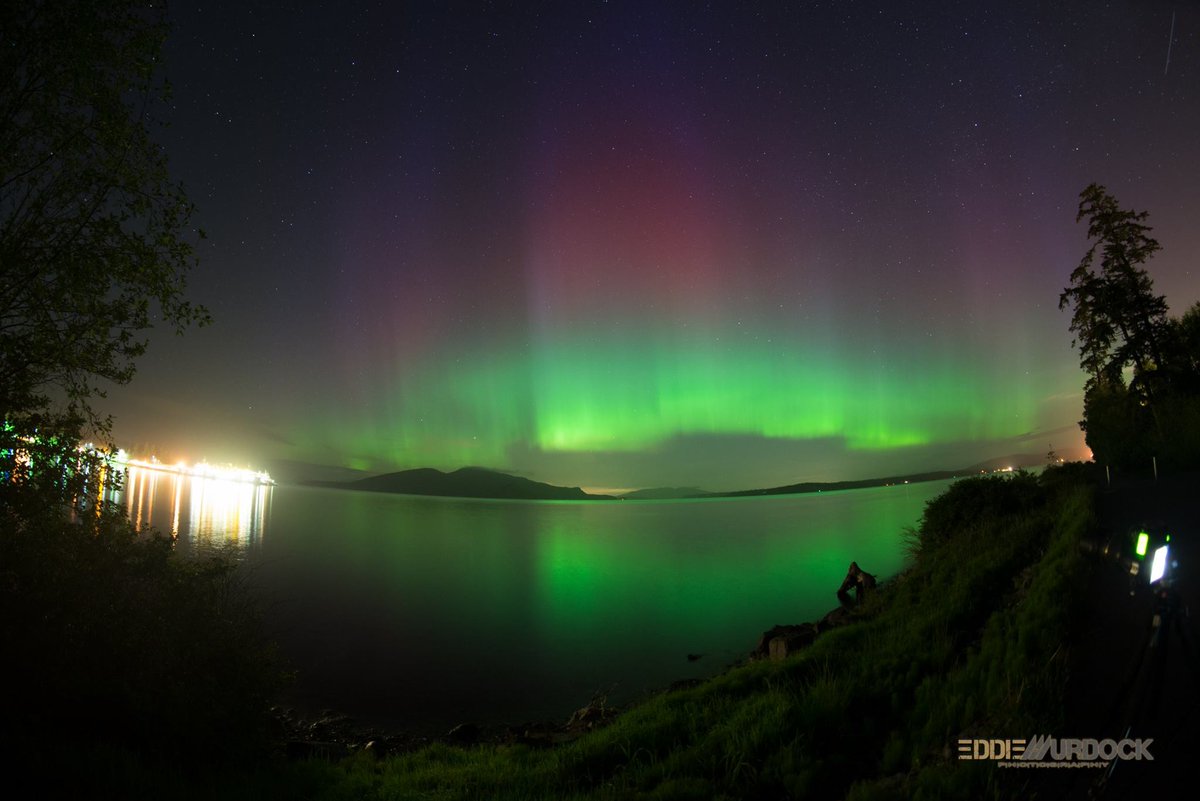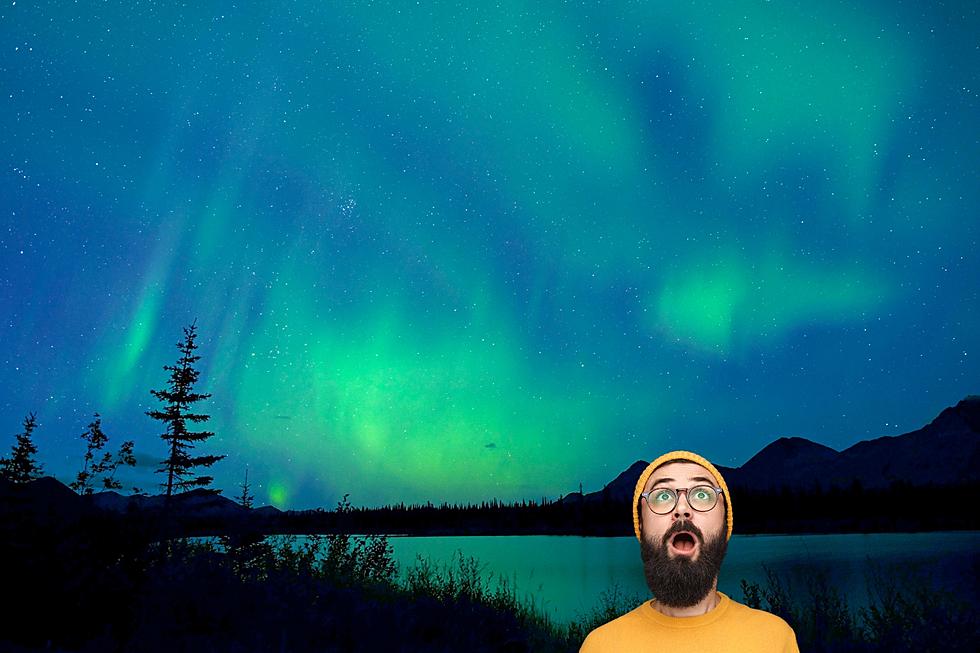Northern Lights In Washington State: A Captivating Experience
Witnessing the northern lights in Washington State is a dream for many nature enthusiasts and astronomy lovers. The aurora borealis, commonly known as the northern lights, is a natural phenomenon that mesmerizes anyone lucky enough to witness it. While Washington State may not be the first destination that comes to mind for aurora viewing, its dark skies and strategic locations provide a unique opportunity to experience this breathtaking spectacle.
For those unfamiliar, the northern lights are caused by charged particles from the sun colliding with Earth's atmosphere. This collision creates vibrant colors dancing across the sky, ranging from green and pink to purple and yellow. While the auroras are more commonly seen in polar regions such as Alaska, Canada, and Scandinavia, Washington State occasionally offers a front-row seat to this celestial show.
This article will guide you through everything you need to know about witnessing the northern lights in Washington State. From understanding the science behind the phenomenon to finding the best locations and tips for photography, we'll cover it all. Let's dive in!
Read also:Aries Bar The Ultimate Hangout Spot For Astrology Lovers And Night Owls
Table of Contents
- Introduction to Northern Lights in Washington State
- The Science Behind the Northern Lights
- Best Locations to See Northern Lights
- Weather and Timing Considerations
- Essential Equipment for Viewing and Photography
- Tips for a Successful Northern Lights Hunt
- Safety Tips for Nighttime Adventures
- Historical and Cultural Significance of Aurora Borealis
- Fascinating Statistics and Facts
- Conclusion and Final Thoughts
Introduction to Northern Lights in Washington State
Why Washington State?
Washington State is often overlooked as a destination for viewing the northern lights. However, its proximity to the northern latitudes and the presence of expansive wilderness areas make it an ideal location for aurora hunters. The state boasts some of the darkest skies in the contiguous United States, minimizing light pollution and enhancing visibility.
While sightings are less frequent than in places like Alaska, the northern lights in Washington State are no less spectacular. When conditions align, the auroras can be seen from various locations, including the North Cascades, Mount Rainier, and the Olympic Peninsula.
The Science Behind the Northern Lights
Understanding the Aurora Borealis
The northern lights are the result of charged particles from the sun interacting with Earth's magnetic field and atmosphere. These particles, known as solar winds, travel through space and collide with atmospheric gases such as oxygen and nitrogen. The energy released from these collisions manifests as vibrant colors in the sky.
- Green: Caused by oxygen molecules at lower altitudes.
- Pink and Purple: Result of nitrogen molecules at higher altitudes.
- Yellow and Blue: Rare colors produced by specific atmospheric conditions.
According to NASA, the auroras are most active during solar maximum periods, which occur approximately every 11 years. Understanding the science behind the phenomenon can enhance your appreciation of the northern lights in Washington State.
Best Locations to See Northern Lights
North Cascades National Park
North Cascades National Park is one of the top destinations for viewing the northern lights in Washington State. Its remote location and minimal light pollution create ideal conditions for aurora sightings. Visitors can enjoy the stunning mountain landscapes while keeping an eye on the night sky for any signs of the auroras.
Mount Rainier National Park
Mount Rainier, the tallest peak in the state, offers breathtaking views of the surrounding wilderness. On clear nights, the northern lights can often be seen from the park's higher elevations. The lack of urban light pollution makes this location particularly appealing for aurora enthusiasts.
Read also:Japan Festival Utah A Celebration Of Culture Tradition And Community
Weather and Timing Considerations
Best Time to View the Northern Lights
The best time to see the northern lights in Washington State is during the winter months, from December to February. During this period, the nights are longer, increasing the chances of witnessing the auroras. Additionally, the cold temperatures help create clearer skies, which are essential for optimal viewing conditions.
Checking weather forecasts and aurora activity predictions is crucial before embarking on a northern lights hunt. Websites such as the Space Weather Prediction Center (SWPC) provide real-time updates on solar activity and geomagnetic storms, which can significantly impact aurora visibility.
Essential Equipment for Viewing and Photography
What You Need for a Memorable Experience
To fully enjoy the northern lights in Washington State, having the right equipment is essential. For viewing, a good pair of binoculars can enhance the experience, allowing you to observe the auroras in greater detail. For photography, consider the following:
- DSLR or Mirrorless Camera: Essential for capturing the vibrant colors of the auroras.
- Wide-Angle Lens: Allows you to capture a larger portion of the sky.
- Sturdy Tripod: Keeps your camera steady during long exposures.
- Extra Batteries: Cold temperatures can drain batteries quickly.
Investing in high-quality gear will ensure you capture stunning images of the northern lights in Washington State.
Tips for a Successful Northern Lights Hunt
Maximizing Your Chances of Seeing the Aurora
Here are some tips to increase your chances of witnessing the northern lights in Washington State:
- Travel to remote locations with minimal light pollution.
- Check aurora activity predictions and weather forecasts regularly.
- Visit during periods of high geomagnetic activity.
- Be patient and prepared to stay out late into the night.
Remember, the northern lights are a natural phenomenon, and their appearance can be unpredictable. Staying flexible and adaptable will improve your chances of success.
Safety Tips for Nighttime Adventures
Staying Safe While Exploring the Dark
Exploring Washington State's wilderness at night requires caution. Here are some safety tips to keep in mind:
- Carry a flashlight or headlamp for visibility.
- Dress warmly in layers to protect against the cold.
- Tell someone about your plans and expected return time.
- Be aware of wildlife and potential hazards in the area.
Prioritizing safety will ensure you have a memorable and enjoyable experience while hunting for the northern lights.
Historical and Cultural Significance of Aurora Borealis
Legends and Stories Across Cultures
The northern lights have fascinated humans for centuries, inspiring countless myths and legends. In Norse mythology, the auroras were believed to be reflections from the shields of the Valkyries, warrior maidens who guided fallen heroes to Valhalla. Native American tribes in Washington State also have their own interpretations of the auroras, often associating them with spiritual or supernatural events.
Understanding the cultural significance of the northern lights adds depth to your appreciation of this natural wonder.
Fascinating Statistics and Facts
Numbers Behind the Aurora Borealis
Here are some intriguing statistics and facts about the northern lights:
- The auroras can occur as far south as 30 degrees latitude during intense geomagnetic storms.
- Green is the most common color observed in the auroras.
- Auroras can extend up to 600 miles above the Earth's surface.
- Scientists estimate that the auroras have been occurring for millions of years.
These facts highlight the complexity and beauty of the northern lights phenomenon.
Conclusion and Final Thoughts
Witnessing the northern lights in Washington State is an unforgettable experience that combines science, adventure, and awe-inspiring beauty. By understanding the factors that influence aurora visibility and preparing adequately, you can increase your chances of seeing this natural wonder. Remember to respect the environment and prioritize safety during your nighttime excursions.
We invite you to share your northern lights experiences in the comments below and explore other articles on our website for more travel inspiration. Happy hunting, and may the auroras guide your path!

